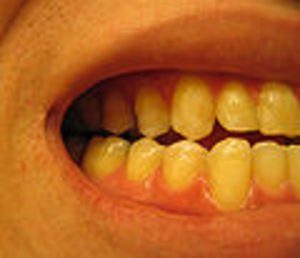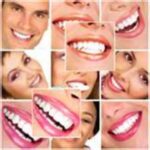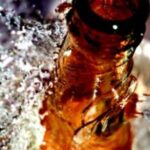Teeth are organic, and as such, they are prone to staining. There are many excellent teeth whitening products on the market that will safely and effectively whiten teeth. But before whitening teeth, it’s important to know which foods cause stains on teeth. Understanding what causes stains on teeth will help you be proactive about what you put in their mouth and what you avoid. An ounce of prevention with teeth stains is worth a pound of cure. Here are the top 10 worst food offenders for leaving stains on teeth.
1. Coffee. When brewed, coffee beans produce a dark, highly acidic, slightly oily solution that, while delicious to drink, leaves stains on teeth. Because we often don’t brush our teeth after drinking beverages like coffee as we might after eating a meal, coffee sits on the teeth. Coffee gets into the spaces between teeth and leaves darker stains between teeth.
2. Tea. Black tea stains many surfaces, including teeth. Try an experiment. Let a small amount of tea and coffee sit out for several days in separate cups. The cup with coffee will wash clean, but the cup with tea will most likely have deep stains that require bleach to remove. Black tea stains teeth in the same way. To prevent tea stains when you are not able to brush your teeth, try chewing a piece of sugarless, teeth-whitening gum. Teeth whitening gum should not be used in place of regular oral hygiene, but only as a supplement.
3. Red wine. Red wine is one of the most notorious foods for leaving stains on teeth. If you are a regular red wine drinker, like me, you will notice that, even with frequent brushing, teeth will still take on a dingy, gray color. Use a pre-brush, whitening mouthwash to fight those stubborn red wine stains.
4. Artificially colored gum and candy. Because candy and gum remain inside the mouth longer than most foods, artificially colored gum and candy will stain teeth. Gum and especially hard candy, like suckers, are sticky and will stain teeth in two ways. First, the sticky sugar will wear down tooth enamel. Next, the artificial coloring will embed itself in the weakened teeth, causing stains and permanent damage over time. Choose sugar-free, dye-free gum and candy to keep teeth from staining.
5. Nuts and berries. Originally, inks and dyes were made from nuts and berries. If nuts and berries make ink, think what they will do to the surface of your teeth. The biggest offenders in the nut category are black walnuts. Just about any colored berry will stain teeth, including blueberries, blackberries, strawberries and raspberries.
6. Fruit juice and artificially colored ‘fruit’ drink. Being acidic, berries and fruit juice will destroy the enamel on teeth if left overnight without brushing. Baby bottles filled with fruit juice and artificially colored juices were a leading cause of infant tooth decay called ‘baby bottle mouth.’ Avoid juice boxes and products made with artificially colored fruit drinks.
7. Colored soda. Add the artificial color of soda to the high acidity and effervescence, and you have a beverage that destroys enamel and literally rots teeth from the inside out. Long-term soda drinkers will have even more trouble removing stains from teeth as the dentin and enamel are destroyed.
8. Soy sauce. People who frequently consume soy sauce will notice that it leaves a brownish tinge on teeth. This can usually be controlled by regular brushing.
9. Curry and turmeric. Curry and turmeric are often used in the same dishes and foods. Both have dye properties and can stain teeth.
10. Chewing tobacco/cigarettes. Although neither chewing tobacco nor cigarettes are digested, they come in contact with teeth and leave stains. The nicotine and additives cause yellow and brown residue that is very difficult to clean away. Baking soda and salt can help clean stubborn teeth stains left from smoking and chewing tobacco.





